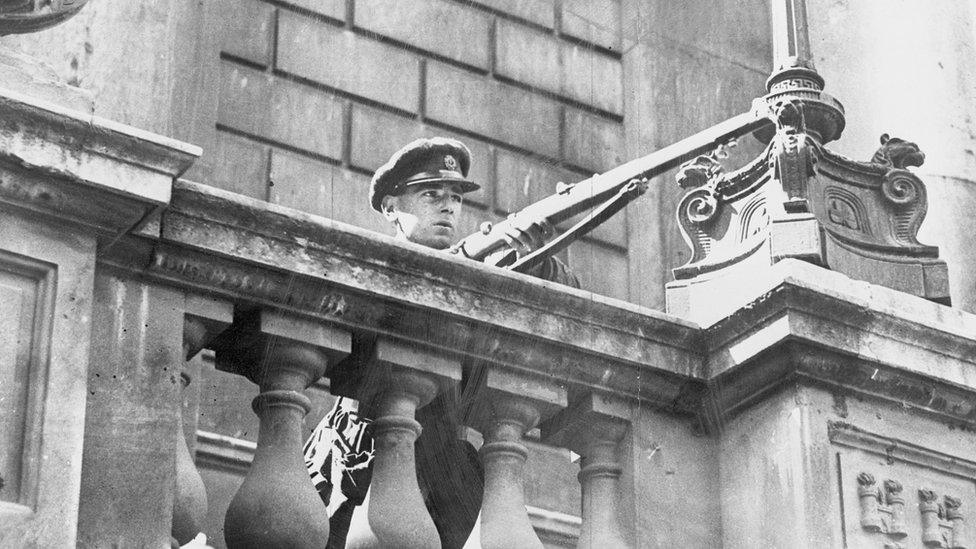The enduring legacy of Michael Collins 100 years on
- Published
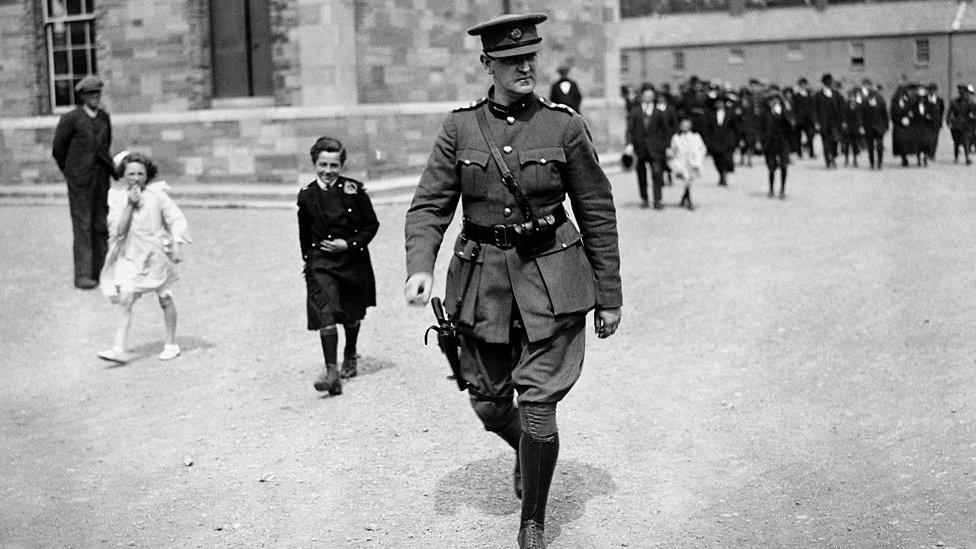
Michael Collins was commander-in-chief of the Irish Free State army when he was killed
"What if Michael Collins had lived?"
That is the question every visitor to the Michael Collins Centre and Museum in Castleview, County Cork, wants to ask, according to its joint founder Tim Crowley.
Monday marks 100 years since Collins was killed in a gun battle between competing sides in the Irish Civil War.
A century on, there remains a huge interest in "the Big Fella", his role in Irish independence and his enduring legacy.
"A lot of our visitors are middle-aged and some have parents and grandparents who were involved 100 years ago," says Mr Crowley, whose grandmother was Collins' cousin.
"But then we also have got 14 and 15 year olds who are huge Collins fanatics who come in who know what he had for his last breakfast.
"They throw some really good questions at us."
Collins was a key figure in the fight for Irish independence and was director of intelligence of the Irish Republican Army (IRA) during the War of Independence with Britain, which lasted from January 1919 until July 1921.
But the terms of the peace treaty with Britain, which he signed, were extremely controversial and led to a civil war which broke out in June 1922, with the IRA splitting into pro and anti-treaty factions.
Collins was commander-in-chief of the pro-treaty forces, which became the new Irish National Army, but on 22 August 1922 while he was travelling through his home county of Cork his convoy was ambushed by anti-treaty fighters.
Collins got out of his car to fight and in the gun battle which followed he was shot dead.
He was 31 years old.
At the time of his death he was chairman of the provisional government of the new Irish Free State, as well as leader of its armed forces.
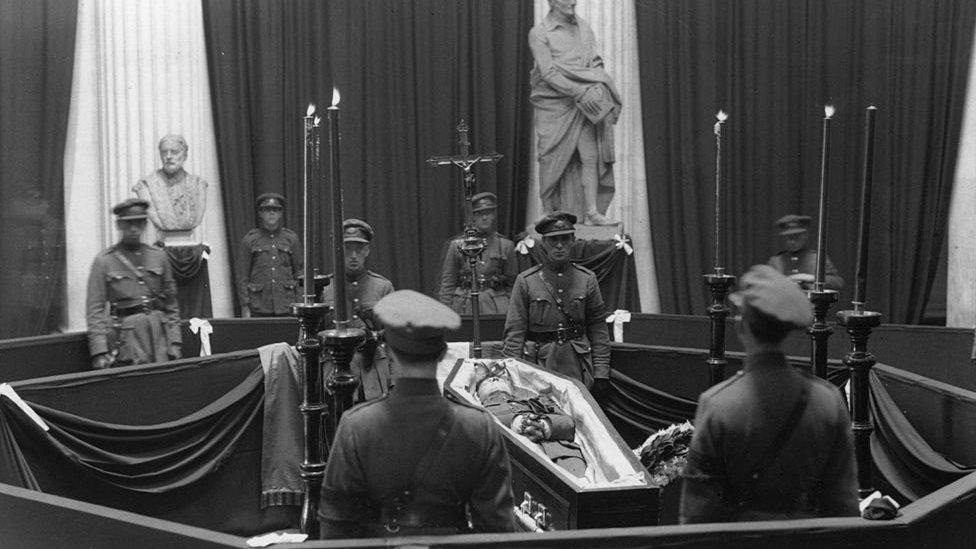
Michael Collins' body lay in state before his funeral
To this day people wonder what might have been if he had survived and gone on to lead the new state.
"People ask would he have tried to bring about a 32 county settlement? Would he have allowed nationalists in the northern state to have been treated the way they were?" Mr Crowley says.
"I think he was the one leader at that time that the evidence suggests had real interest in the northern situation.
"In his mind the treaty was just the beginning."
He suspects Collins would have been more forceful when it came to the Boundary Commission, which was intended to decide on where the new border between the Irish Free State and Northern Ireland should lie.
In the end, although the commission suggested small transfers of land in both directions, its recommendations were never implemented and the border remained the same as it was in 1921.
The civil war left a bitter legacy in Irish society, particularly the execution of dozens of anti-treaty fighters by the new provisional government.
The first official executions were carried out in November 1922 and they continued until May 1923.
But Prof Marie Coleman, professor of 20th Century Irish history at Queen's University, Belfast, does not believe this would have been any different had Collins not been killed.
"There has been a lot of speculation that the course of the civil war could have been different, that perhaps the acrimony of the executions might have been different," she says.
"I see nothing to suggest that Collins would have prosecuted the war any differently.
"Arguably, he had more at stake in defending the treaty settlement because he had been a signatory of the treaty.
"He showed nothing between June and August 1922 to suggest that he would have been any softer on the republican side than Richard Mulcahy was after him."
Collins' killing came just 10 days after the death of Arthur Griffith - another key figure in the fight for Irish independence.
Other prominent leaders such as Éamon De Valera were now on the anti-treaty side.
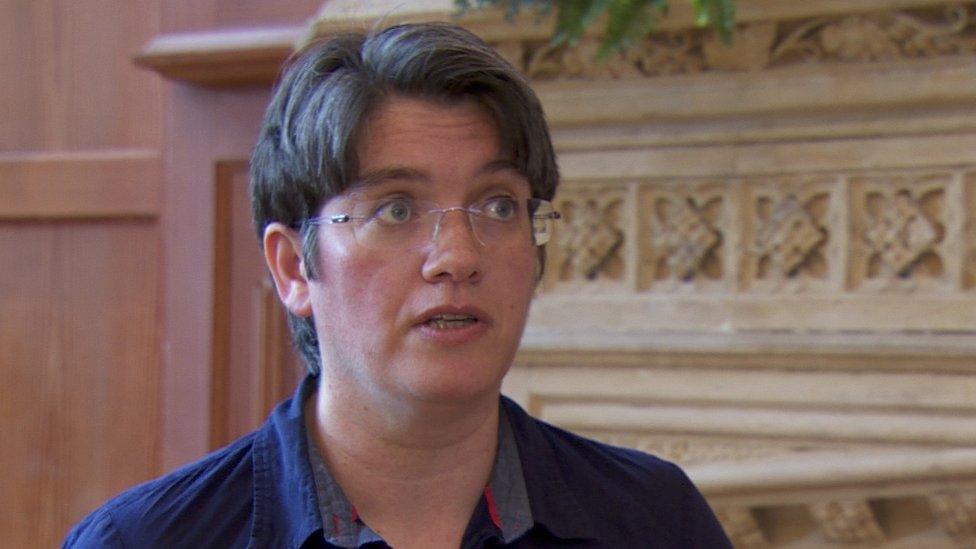
Prof Marie Coleman doubts that Collins' death changed the course of the Civil War
But Prof Coleman says those who filled the vacuum were also capable leaders.
"Griffith was replaced by WT Cosgrave who was probably the most experienced politician in Sinn Féin," she says.
"Collins was replaced by Richard Mulcahy, who had been the chief of staff of the IRA during the War of Independence.
"So probably, in fact, he knew more about running the army than Collins would have done."
There is still no agreement on who fired the fatal shot that killed Collins, which has left space for a range of theories and conspiracies.
Mr Crowley says the events of Collins' final day are the most popular part of the museum and centre which he runs, with visitors always keen to ask about who was responsible for his death.
"People are fascinated by the fact he died the way he did," he says.
"He died a hero's death with a gun in his hand, you couldn't make it up."
On Sunday, Mr Crowley will attend the official commemorations and on Monday the centre is running a trip to several locations associated with Collins, including the scene of his death at Béal na Bláth where they will hold a minute's silence at the time Collins was shot.
One of the more controversial aspects of Collins' legacy remains the fact he agreed to the Anglo-Irish Treaty.
It created the Irish Free State but within the British Empire and with the British King as head of state, who Irish TDs (MPs) were required to swear an oath of allegiance to.
It also confirmed the partition of Ireland and the creation of Northern Ireland.
"Some people say to us that Michael Collins was not a republican," Mr Crowley says.
"But I would say he was a pragmatic republican with a plan that could actually succeed.
"He was the sort of leader who only comes along for a country once in a thousand years."
Related topics
- Published21 August 2022
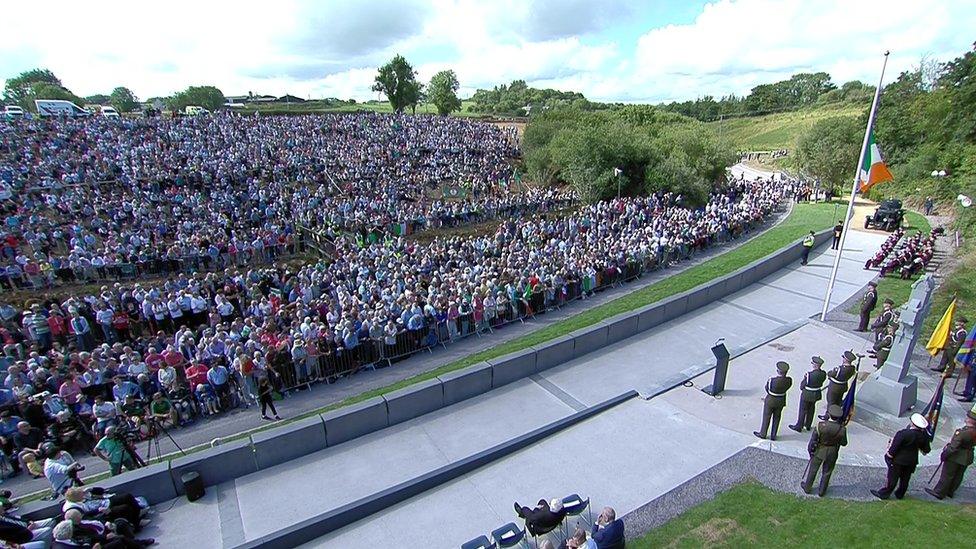
- Published21 December 2020
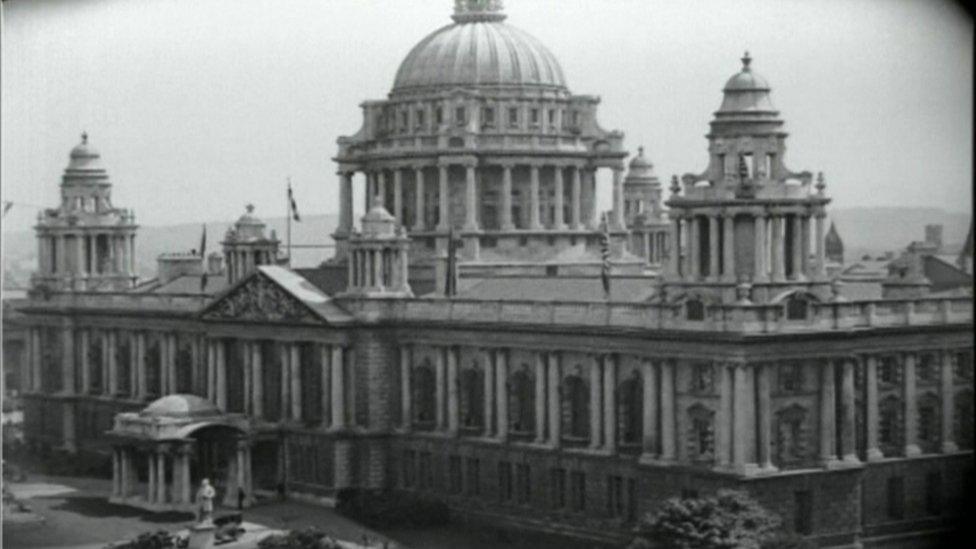
- Published28 June 2022
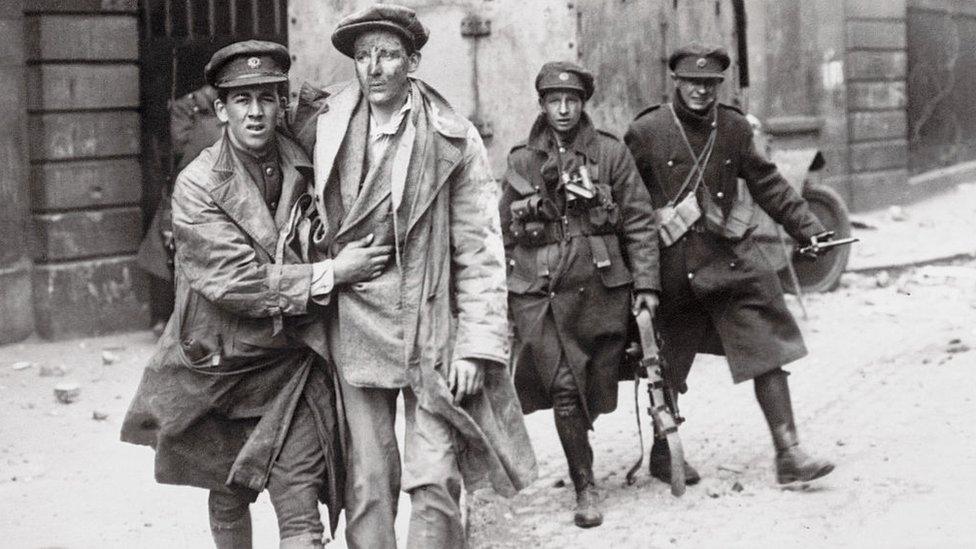
- Published1 January 2022
